
'Eshu' was McQueen`s first collection to be shown in Paris (instead of London).

It is inspired by the (pre-colonial) Yoruba people of West Africa and their mythology.
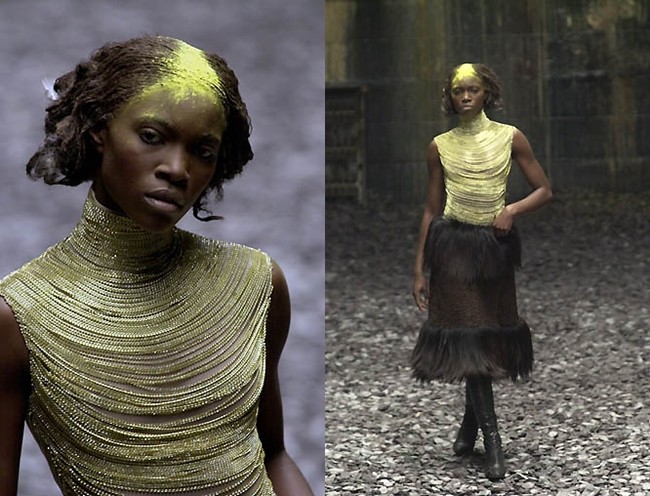
The oral history of the Yoruba describes an origin myth, which tells of God lowering a chain at Ile-Ife, down which came Oduduwa, the ancestor of all people, bringing with him a cock, some earth, and a palm kernel. The earth was thrown into the water, the cocked scratched it to become land, and the kernel grew into a tree with sixteen limbs, representing the original sixteen kingdoms.
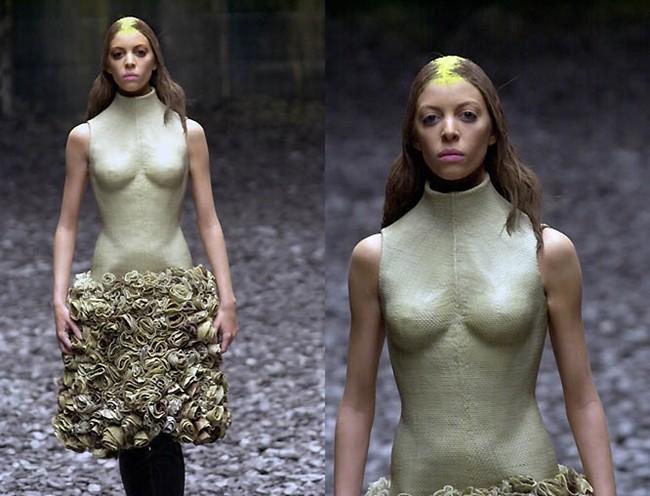
The Yoruba claim that they have 401 deities; in truth, there are more than these. The complexity of their cosmology has led Western scholars to compare them to the Ancient Greeks and their impressive pantheon.

Yoruba deities are known as orisha, and the high god is Olorun. No organized priesthoods or shrines exist in honor of Olorun, but his spirit is invoked to ask for blessings and to confer thanks.
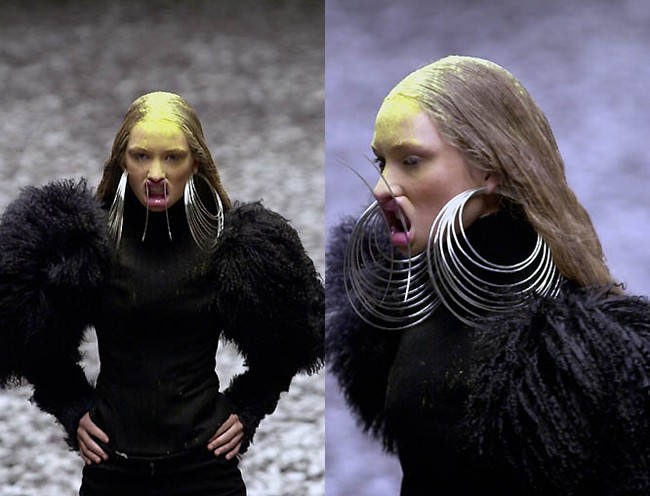
Early clothing in Africa was made from treated animal hides, furs, and feathers.
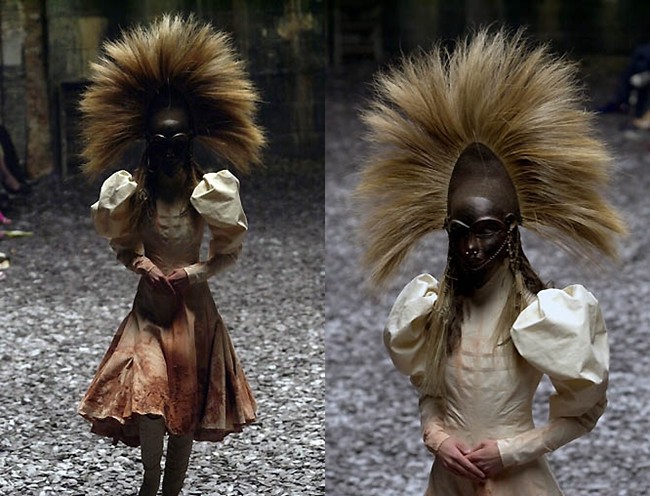
The bodily decorations consisted of heavy steel and wooden bangles, pierced septa and lips, pubic aprons, and traditional Yoruba tattoo scarring called Kolo, all representing the body modification aesthetic of the Yoruba belief that scarification is pure and natural.
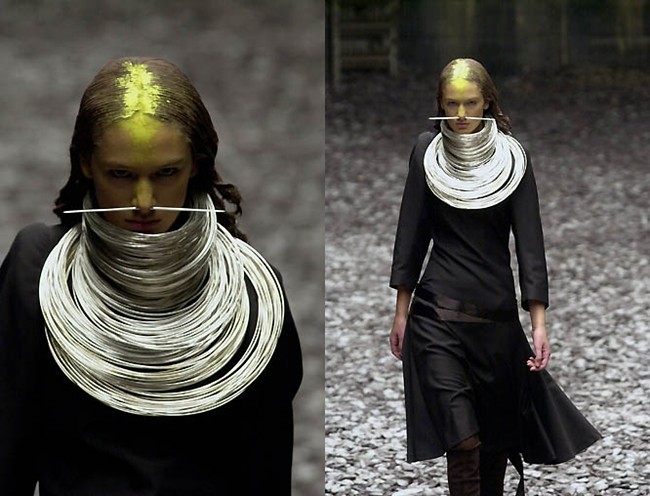
Powder glass beads the color of the concrete rendering cascaded mud-spattered, transparent tunic dresses while the trickster Eshu deity was depicted in the form of carved horsehair headpieces.

Yoruba masks are worn by a traditional healer to drive evil spirits from the possessed person. The arts of the Yoruba are numerous in form, Beautifully sculptured and or carved art pieces are placed on shrines to honor the gods and the ancestors. Varied masking traditions have resulted in a great diversity of mask forms.
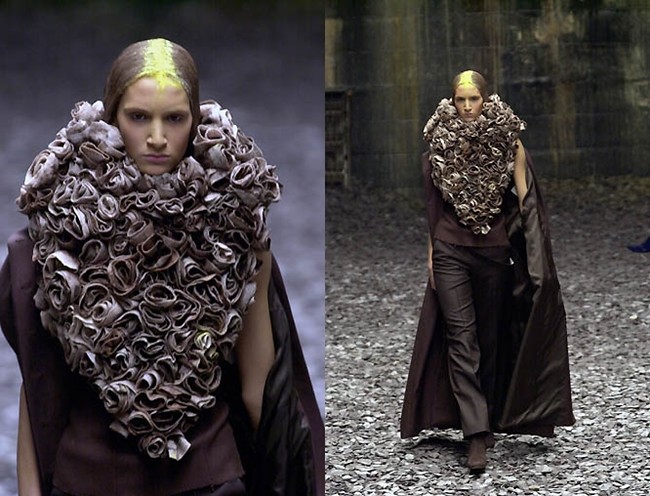
African mask bearers appearing at funerals are believed to embody the spirit of the deceased person. These maskers have the power to communicate with the deceased, Yoruba people strongly believe that when they die, they enter the realm of the ancestors or spirit world from where they have influence and power on earth.
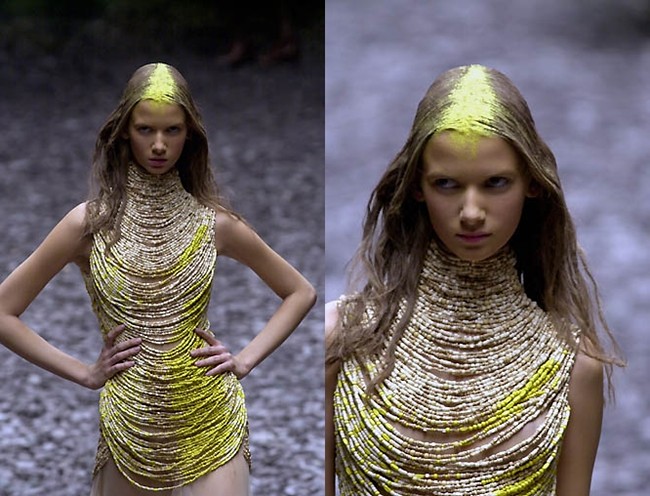
Some tribes have a superstitious fear of gold and will not wear it. Silver has thus taken its place. Silver jewelry has both symbolic and real value, serving also as savings and for (foreign) exchange.
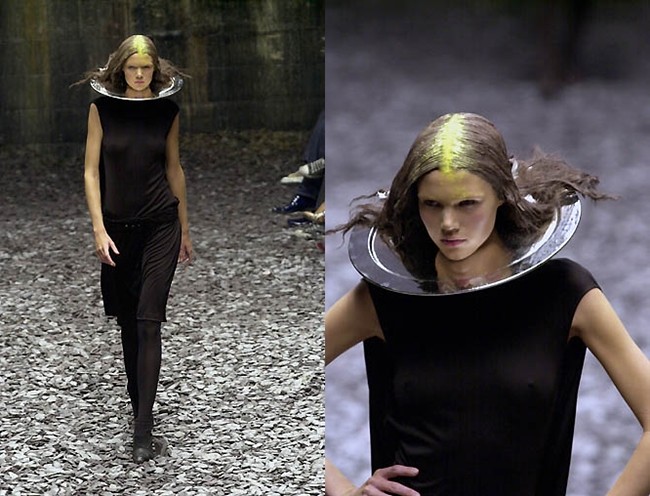
Many African societies weave cloth from locally grown cotton. Other sources of fiber include the raffia palm in Central and West Africa, jute and flax in West Africa and Madagascar, and silk in Nigeria, Madagascar, and East Africa. All these fibers can be dyed using vegetable and mineral dyes.
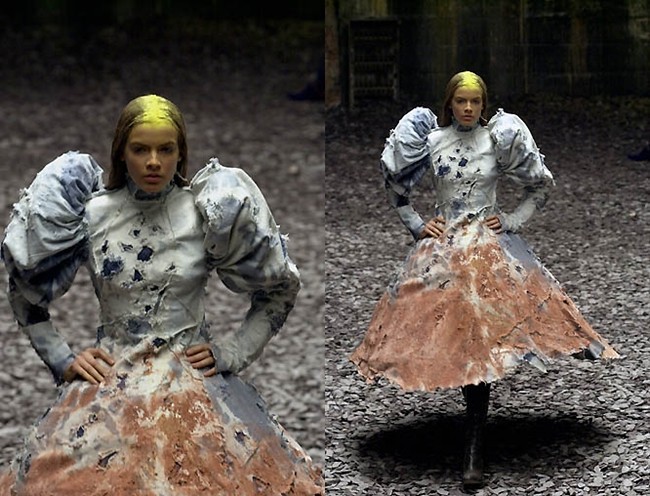
Yoruba women cloth makers, known as aladire, use resist dye methods to make adire eleso. They use cassava paste to paint or stencil repeated abstractions of animals and plants onto the cloth.
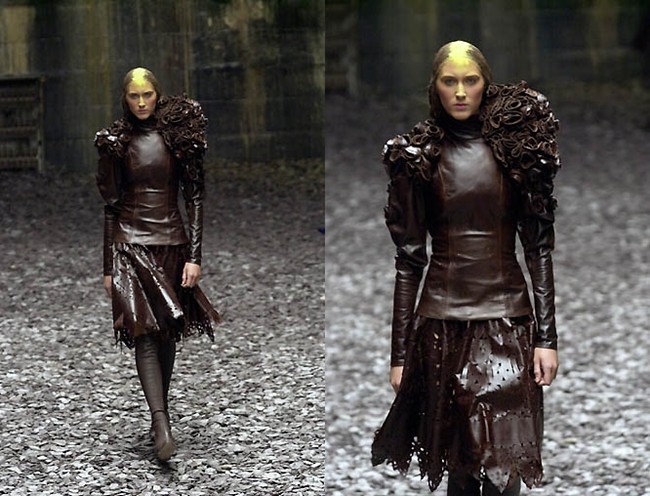
Beaded African jewelry has its own language and much can be derived about history, culture and status. In southern and eastern Africa, most inhabitants can wear beaded refinement but in Yoruba culture it is confined to rulers.
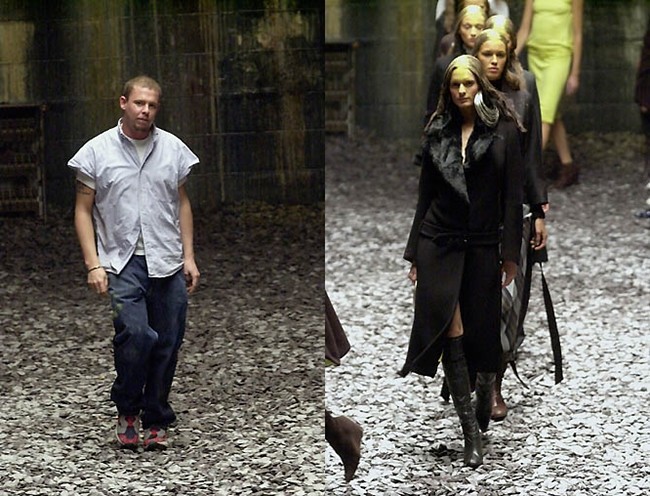
Sources of information: 1 2 3 4 5
Which look is your favourite?
What do you generally think about strong ethnic influences into fashion?
Where does our fascination for so-called 'primitive' cultures derive from? Is it a reflection of our desire for spirituality or a "more simple life"?

i love this!
ReplyDeleteHe was one of my favorite designers..he made the runways so fun and daring..great post!
No doubt that Sarah is doing a great job but no one can really replace him!
ReplyDeleteXoXo
Plami
http://www.fashionthrill.com/
He was the greatest designer. I adore the Yoruba people inspired look.
ReplyDeleteLovely post, fantastic pics!!!
Kisses and hugs
Miss Margaret Cruzemark
http://margaretcruzemark.blogspot.com/
This is definitely one of my favourite posts from you! I was hooked from the first word, and I love how informative it was. Great job! &heart;
ReplyDelete@Lenne: thanks for the appreciation, dear. The research was really difficult and took very long - I wish I had could have found more in-depth information though (f.e. on the cultural meaning of the silver neck-rings).
ReplyDeleteMy research (sadly) showed that you can buy lots of african tribal jewellery (replicas) on the the internet but there are no in-depth ressources on it`s meaning... :/ -> What`s the point in "selling out" a culture who`s meaning you don`t even understand???
Or do they want to keep the meaning unknown so everybody can project their own "exotic dreams" on it???
I agree with you many ignorant and naive people constantly misunderstand and misrepresent "primitive" cultures, I loved that McQueen took inspiration from everything and everyone, not like so many designers today who simply reference the Euro monarchy as the end all and be all of "high" fashion. He always took risks and didn't care who he offended, i'm sure he made some of the old society ladies in the audience that day a bit uncomfortable, but it gave them some exposure to something different. Great post!
ReplyDeleteSimply the best. Thanks for sharing ;)
ReplyDeleteI loved your explanation of the collection and I've submitted the post to StumbleUpon so more people will see it. It was a great start in Paris, no?
ReplyDeleteI generally like ethnic influences in fashion, though not when everyone is after the same influence, or if it's done in a really superficial way. McQueen went *all the way*.
I bet that most of the editors watching the show were probably going "WTF." Alexander McQueen is my favourite designer, and I like how he takes inspiration from all the bizarre places, and at this collection, Africa and its mythology. Sarah Burton is alright, but she only has fragments of McQueen's vision, so she's never, ever going to replace him.
ReplyDeletewww.style-abuse.blogspot.com
Absolutely fascinating post. It was so informative and the designs were incredible. I'm so glad I found your page through Links A La Mode. xoxo
ReplyDeleteGreat post! Nice to see more of an in-depth focus on the inspiration behind this collection, which was a really interesting shift in his design direction. I think there were some links, also, to Isabella Blow's explorer ancestors in the concept behind the show - of an Englishwoman gradually being absorbed into a "savage" society.
ReplyDeleteJust to note, also, that the show was actually held in London, at the Gainsborough Studios (I remember coming across old reports of it being staged in Paris, also, but his French debut wasn't until Spring 2002)